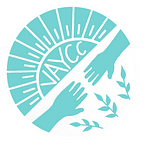Handing the Microphone to Activists of Color
Tani Washington
As protests surrounding the deaths of unarmed black bodies flare up once again, people across the world are shouting the same thing: Black lives matter. In this capacity, global activists are referring to systemic police brutality against black and brown citizens.
This problem, however, is simply one of many aspects of oppression that necessitate the mantra “Black Lives Matter.” Chris Rock, in a 2014 interview with Vulture, stated it very poignantly when he said that in this country, we treat racism like a fad rather than “a disease that eradicates millions of people.”
Indeed, the recent resurgence of the Black Lives Matter movement has many white liberals “seeing” racism for the first time. While many black activists welcome white allyship in the fight against racial inequity, we recognize that much of the alliance was gained solely through visuals of black death. If the United States, in particular, is to sustain this path of reformation, white activists must recognize that Black lives matter everywhere under every system of oppression — not just the ones that go viral.
One major system of oppression that often goes unaddressed is environmental racism. As defined by Greenaction, environmental racism is the disproportionate impact of environmental hazards on people of color. Environmental justice is the response to this disparity. This article is not meant to fully explain the environmental justice movement, but rather to discuss some flaws within it. For reference on the magnitude of this movement, there are five resource collections at the end of this article to provide more depth on the issues and give actionable solutions.
In regards to race relations within progressive movements, the obstacles are often sensitive to navigate through. While it is essential to discuss the relevance of race in conjunction with the climate, there is a troubling dichotomy that shows up when the conversations end. Too often, well-meaning white climate activists bring their ideas into marginalized communities and act autonomously rather than with the people of color (POC) who are already living there. This kind of action is known as the “White Savior Complex.”
Coined in 2012 by Nigerian-American writer Teju Cole, the White Savior Complex involves “big emotional experiences that validate white privilege” but completely disregard the policies that have created or maintained systemic oppression. This complex is often found through Instagram posts of white girls cuddling impoverished Venezuelan babies, white families parading around their adopted Congolese children, or — yes — white climate activists planting trees in Brooklyn, New York.
None of these “feel-good” performances do anything to truly address the problems facing those various communities; they simply relieve white activists of temporary guilt or discomfort. The more sinister result of this complex is the discrimination that ultimately follows: Native people are prohibited from helping with humanitarian projects, African families are exploited by international adoption agencies, and low-income POC are excluded from environmental conversations that impact their environment.
In a 2012 article from the Touro Law Center, professor Patricia Salkin wrote that true development has three sustainable components: “peace and security, economic development” and “human rights.”
When POC are excluded from conversations on urban restructuring, their communities undergo what is known as environmental gentrification. This directly contradicts the first statute of peace and security.
When poor POC are pushed out of the zero-waste movement due to the high expense of many products, the solution is not fully sustainable. This directly contradicts the second statue of economic development.
When POC are used as tokens regarding environmental justice, then their voice and humanity are stripped from them. This directly contradicts the third statute of human rights.
According to the World Commission on Environment and Development, all of these offenses perpetuate both environmental degradation and poverty. In other words, these offenses perpetuate the need for the phrase “Black Lives Matter.”
White activists have much leverage regarding their racial privilege. Oftentimes, this leverage can turn to egoism and create more harm than good. If, however, white activists utilize their racial privilege to stand in solidarity with activists of color, hand the microphone to activists of color, and refer to the expertise of activists of color, then that is development done right. In the end, it all comes down to respect and restoration. When white activists acknowledge their position, yet still actively work with POC to respect and restore their spaces, there is nothing we can’t accomplish.
Environmental Justice Resource Collections:
- NAACP: Environmental & Climate Justice Resources
- Racial Equity Tools: Environmental Justice
- Washington Environmental Council: Resources on Environmental Justice, Racism, and Whiteness
- U.S. Environmental Protection Agency: Environmental Justice
- Indigenous Environmental Network: Campaigns, Programs, Issues
Tani Washington is an intersectional feminist, poet, and organizer. She currently works to integrate youth of color into spaces of environmental justice, connect young people with fields in international relations, and foster educational equity in Henrico County, Virginia.
